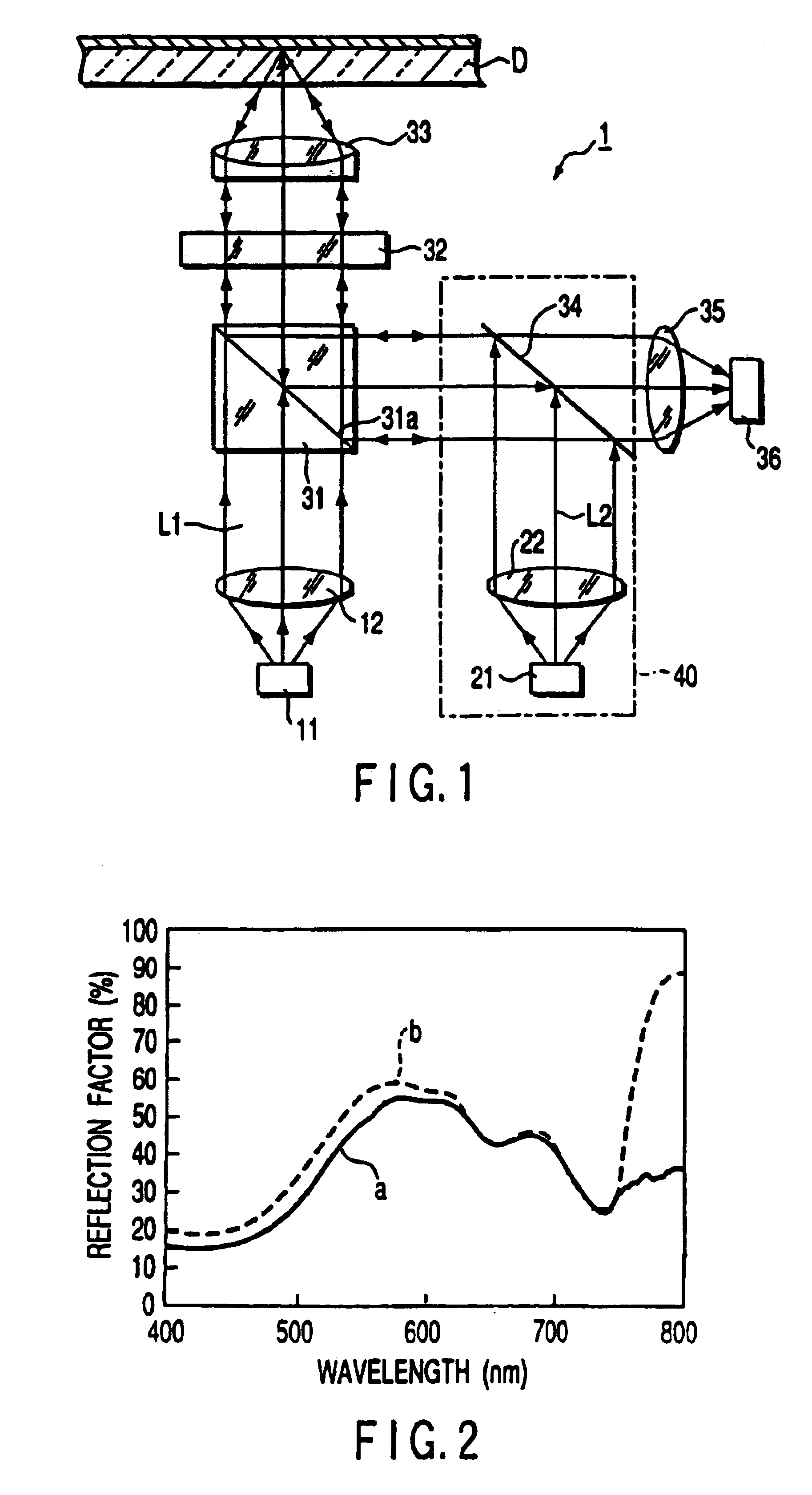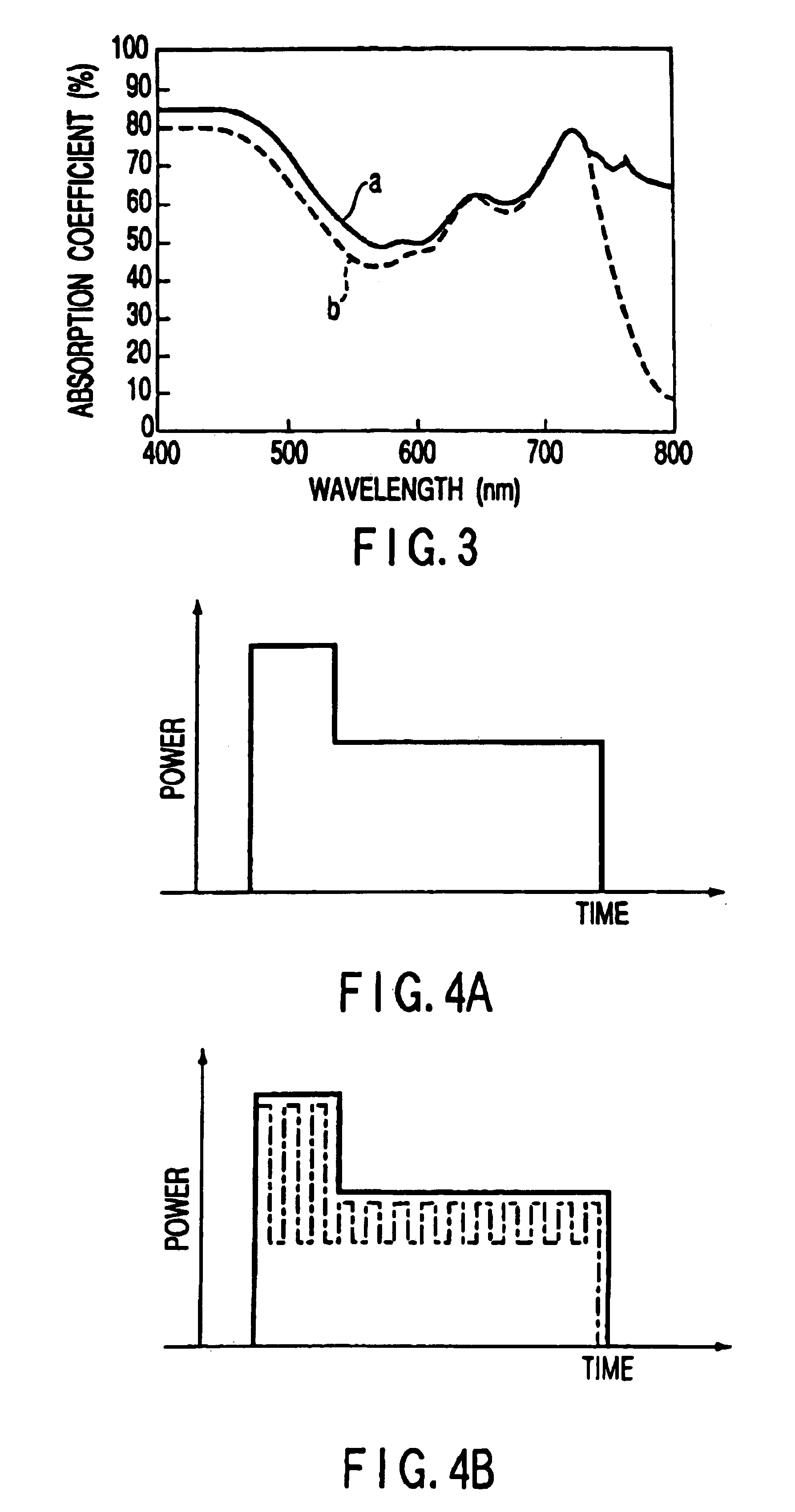Method for recording information in optical information medium and reproducing information therefrom
a technology of optical information and recording information, which is applied in the field of recording information in optical information medium and reproducing information therefrom, can solve the problems of slow recording speed of recording unit and slow recording speed of reproducing unit, and the inability to improve recording speed, so as to achieve stable recording of recorded signals and high recording speed
- Summary
- Abstract
- Description
- Claims
- Application Information
AI Technical Summary
Benefits of technology
Problems solved by technology
Method used
Image
Examples
Embodiment Construction
[0053]An optical head apparatus (i.e., an optical information recording / reproducing apparatus), which is one embodiment of the present invention and which records information in an optical information medium and reproduces information therefrom, will now be described with reference to the accompanying drawings, along with an information recording / reproducing method used in that apparatus.
[0054]As shown in FIG. 1, an optical head apparatus 1 comprises a first semiconductor element 11 for emitting a laser beam (optical beam) L1 having a first wavelength and a second semiconductor element 21 for emitting a laser beam (optical beam) L2 having a second wavelength.
[0055]The semiconductor laser elements 11 and 12 are arranged in such a manner that the polarization directions of the laser beams L1 and L2 emitted from them are at right angles to each other.
[0056]The laser beam L1 emitted from the first semiconductor laser element 11 is first collimated by a first collimator lens 12 and then ...
PUM
| Property | Measurement | Unit |
|---|---|---|
| transmittance | aaaaa | aaaaa |
| transmittance | aaaaa | aaaaa |
| output angle | aaaaa | aaaaa |
Abstract
Description
Claims
Application Information
 Login to View More
Login to View More - R&D
- Intellectual Property
- Life Sciences
- Materials
- Tech Scout
- Unparalleled Data Quality
- Higher Quality Content
- 60% Fewer Hallucinations
Browse by: Latest US Patents, China's latest patents, Technical Efficacy Thesaurus, Application Domain, Technology Topic, Popular Technical Reports.
© 2025 PatSnap. All rights reserved.Legal|Privacy policy|Modern Slavery Act Transparency Statement|Sitemap|About US| Contact US: help@patsnap.com



